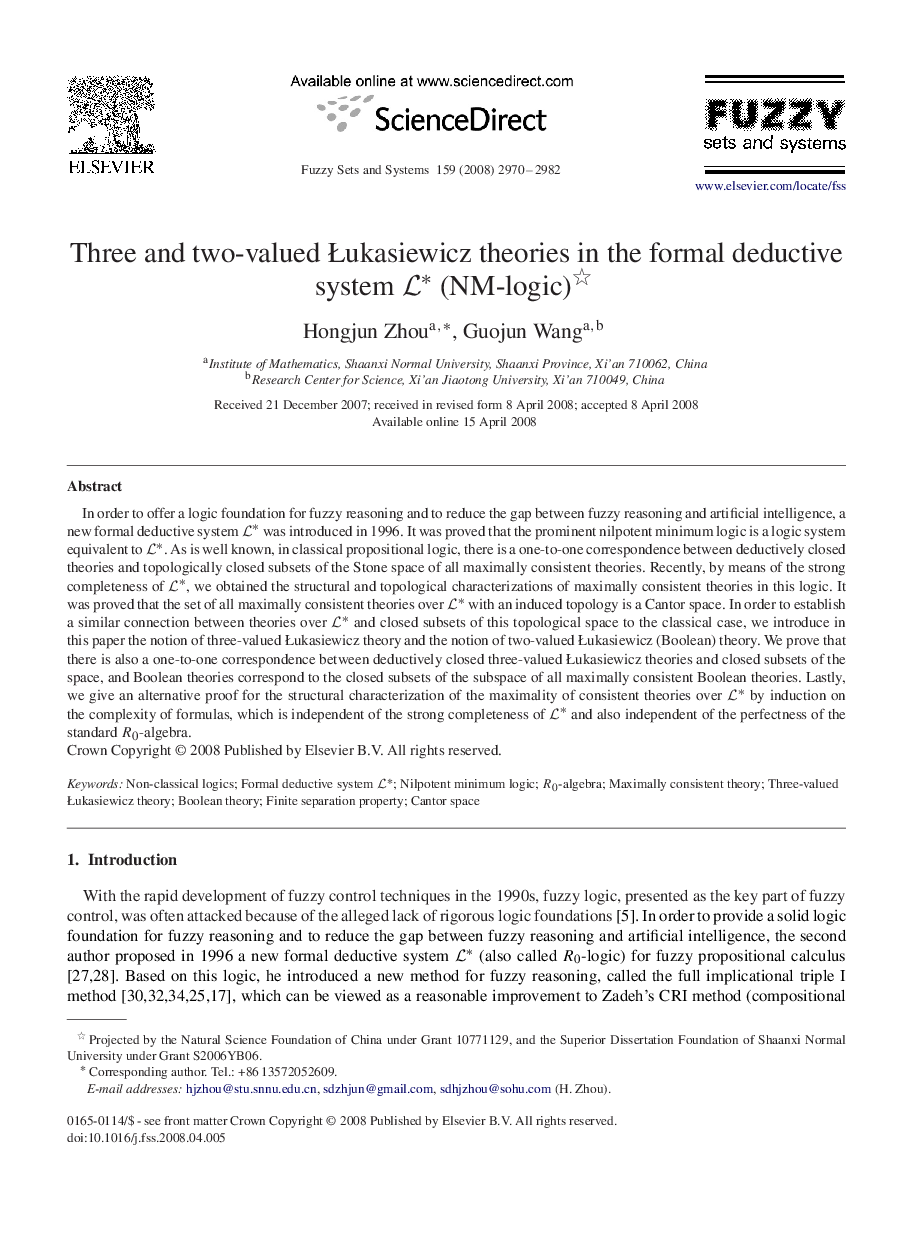| کد مقاله | کد نشریه | سال انتشار | مقاله انگلیسی | نسخه تمام متن |
|---|---|---|---|---|
| 390282 | 661238 | 2008 | 13 صفحه PDF | دانلود رایگان |

In order to offer a logic foundation for fuzzy reasoning and to reduce the gap between fuzzy reasoning and artificial intelligence, a new formal deductive system L* was introduced in 1996. It was proved that the prominent nilpotent minimum logic is a logic system equivalent to L*. As is well known, in classical propositional logic, there is a one-to-one correspondence between deductively closed theories and topologically closed subsets of the Stone space of all maximally consistent theories. Recently, by means of the strong completeness of L*, we obtained the structural and topological characterizations of maximally consistent theories in this logic. It was proved that the set of all maximally consistent theories over L* with an induced topology is a Cantor space. In order to establish a similar connection between theories over L* and closed subsets of this topological space to the classical case, we introduce in this paper the notion of three-valued Łukasiewicz theory and the notion of two-valued Łukasiewicz (Boolean) theory. We prove that there is also a one-to-one correspondence between deductively closed three-valued Łukasiewicz theories and closed subsets of the space, and Boolean theories correspond to the closed subsets of the subspace of all maximally consistent Boolean theories. Lastly, we give an alternative proof for the structural characterization of the maximality of consistent theories over L* by induction on the complexity of formulas, which is independent of the strong completeness of L* and also independent of the perfectness of the standard R0-algebra.
Journal: Fuzzy Sets and Systems - Volume 159, Issue 22, 16 November 2008, Pages 2970-2982